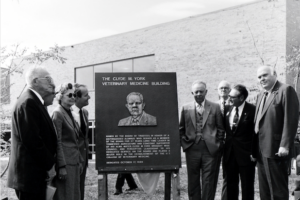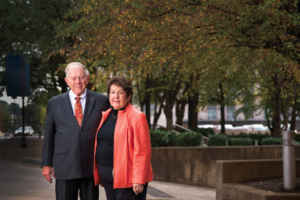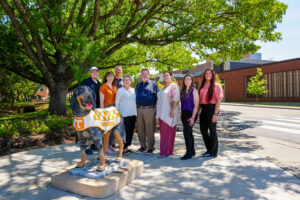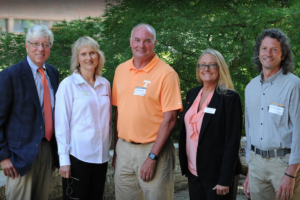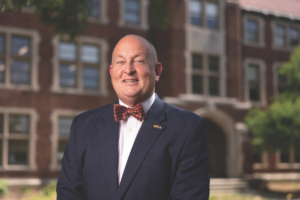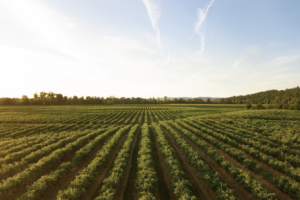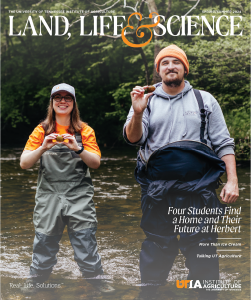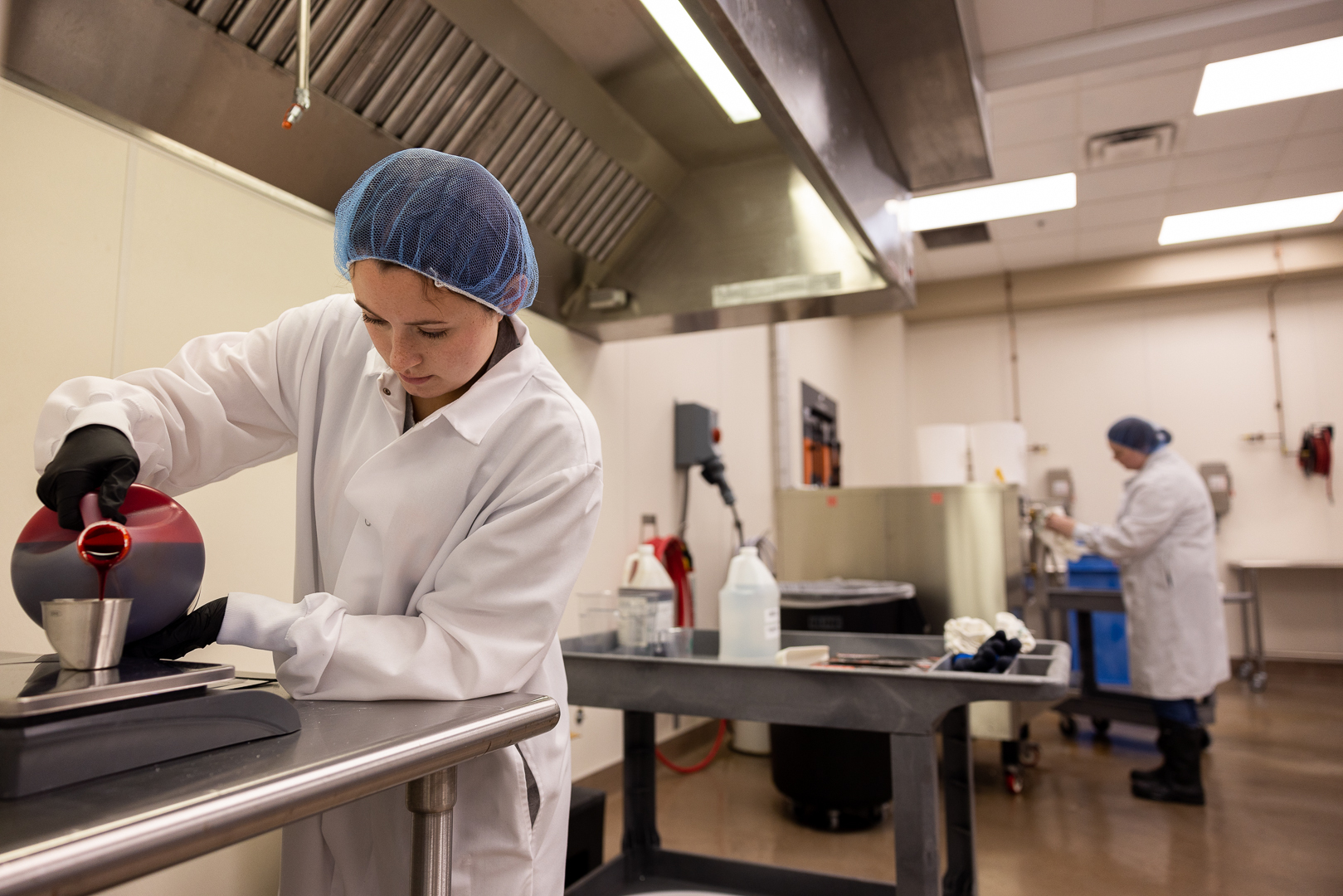
A behind-the-scenes look at how the UT Creamery trains future food science professionals
As a fourth-year food science student in the Herbert College of Agriculture, Hannah Lansbury keeps a busy schedule. On a typical day, she goes to her classes in the Food Science Building on the University of Tennessee Institute of Agriculture campus, studies in the student lounge, and then takes a trip upstairs, where she dons steel-toed rubber boots, a lab coat, nitrile gloves, and a hairnet.
She’s ready for her shift of making ice cream for the UT Creamery.
Lansbury joined the Creamery team in August 2023. She spent countless hours researching and developing ice cream recipes, cleaning and sanitizing the production facility, conducting inventory assessments, and producing delicious, premium ice cream. For her, this is not only a convenient job opportunity. It also is a unique learning experience that has made significant contributions to her food science education.
“It’s a good way to see what I’m learning in action,” Lansbury explains. “Sometimes there are practices we do in the Creamery that I haven’t learned about in the classroom yet; then I get to go to class and learn why we do them.”
The original UT Creamery opened in 1915 and trained dairy science students in the art of manufacturing an array of products, including cheese, milk, butter, and, of course, ice cream, until it closed in 1989. With the help of generous donors Sue Conley and Peggy Smith, UT alumnae and founders of California’s acclaimed Cowgirl Creamery, and a partnership between the Herbert College of Agriculture and the UT College of Education, Health and Human Sciences, the Creamery reopened in 2023 with a focus on premium ice cream production and retail business management.
“The Herbert College of Agriculture is thrilled to be a part of recreating a piece of UT history by bringing back the Creamery. The valuable experience students gain by working at the Creamery aligns with Herbert’s goals as we strive to expand academic programming and provide our students with real-world learning opportunities.“
-David White, interim dean of the Herbert College of Agriculture
The revitalized Creamery is run almost entirely by students. It consists of a production facility operated by the UT Department of Food Science and a storefront in the UT Culinary Institute and Creamery building managed by Rocky Top Institute student fellows in the UT Department of Retail, Hospitality and Tourism Management.
The retro feel and convenient location of the new UT Creamery shop, at Neyland Drive and Kingston Pike, draws in locals and travelers alike to try this new, yet nostalgic, product. The higher-than-average fat content of the ice cream, sitting right at 16 percent, contributes to its premium taste and texture, and while the scoops seem classic and simple enough, customers may be intrigued to know that every aspect of the frozen treat, from its flavor profile to its consistent quality, was meticulously developed over a months long process by a group of students who learned the ins and outs of food production along the way.
“I love when I hear someone who has been to the Creamery say, ‘Oh my gosh, the ice cream is so good,'” Lansbury says. “Knowing that I had an impact on that is pretty cool.”
Student workers at the Creamery don’t cut any corners when it comes to commercial ice cream production. They follow all the standards and procedures of a typical facility, attaining useful skills and knowledge related to research and development, safety and sanitation measures, production, quality checks, and, naturally, paperwork.
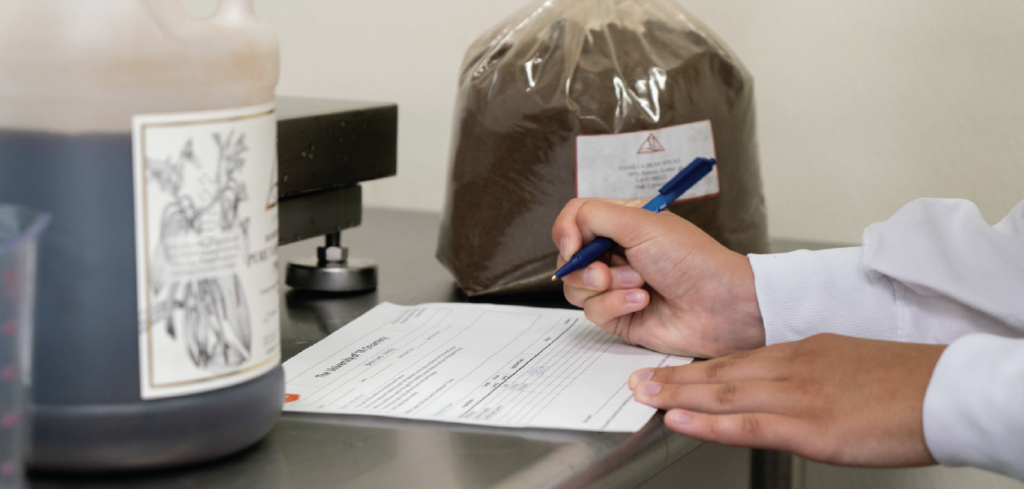
Creamery products start with a lengthy research and development phase. After receiving flavor requests from the Rocky Top Institute, the student production team, guided by Creamery manager Nathan Miller, experiments with ingredients and recipes, creating approximately twenty to thirty variations of each flavor. Then Miller, along with UT Center for Sensory Science manager Sara Burns, works to narrow them down to around six to ten options.
After the initial culling, another small panel of taste testers helps narrow the options to three. Then, students working in the UT Center for Sensory Science conduct a variety of consumer sensory tests involving a panel of one hundred volunteers who, upon tasting each of the three final options, will answer questions about their impressions of each flavor and determine which is their favorite.
Grace Powell, a senior agricultural leadership, education and communications student in Herbert, has been working in the Creamery for nearly two years and fondly remembers the early days of research and development for the Creamery’s core flavors, which include VOLnilla Bean, Torchbearer Chocolate, Go Big Orange, Mint Champion Chip, and Smokey’s Strawberry Kisses.
“We took so long with flavors like vanilla,” Powell explains. “I worked on it for an entire semester, which seemed crazy, but if you don’t have a good vanilla, the base for the rest of your recipes will struggle.”
Once the recipe for a flavor is established, the Creamery team begins the production process. The students work under the guidance of Miller to build the ingredient inventory and establish an efficient production schedule based on orders placed by the storefront, which provides valuable experience in supply-chain logistics.
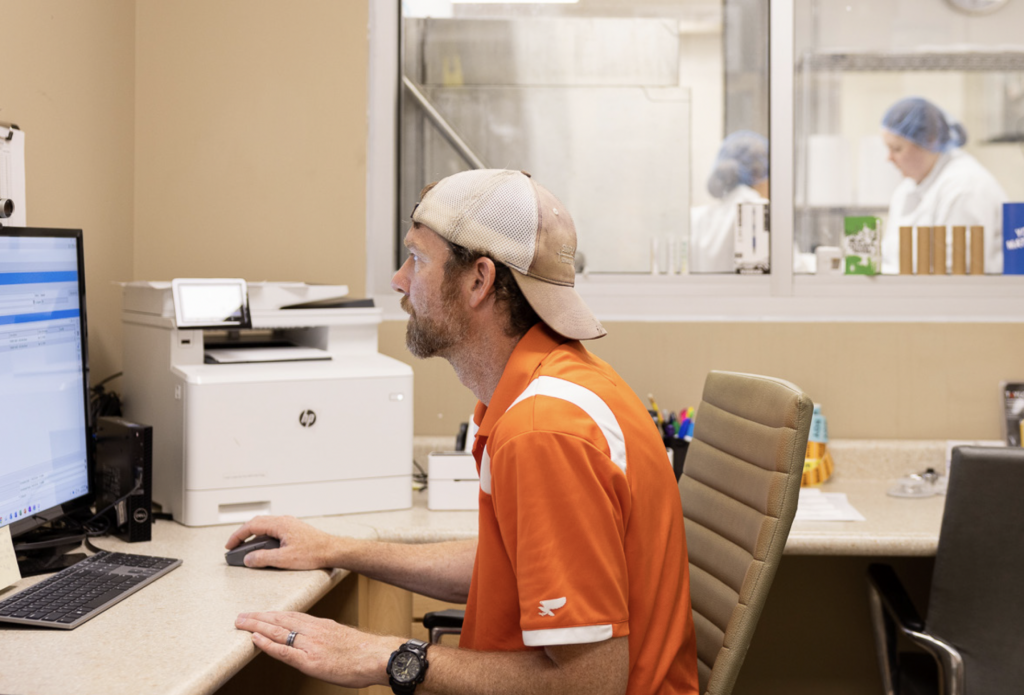
An ice cream production day begins with a thorough pre-op sanitation process, cleaning everything from the ceiling to the floor in the production area, as the students ensure that all food-safety standards are met. After the freezing process, the ice cream is stored in a blast freezer that maintains a temperature of negative fifteen degrees Fahrenheit for approximately twenty-four hours to allow the mixture to develop the optimal consistency for hand-scooped ice cream.
Students learn how each step of the process, from planning and sanitization to production and quality assurance, comes together to create a product that is consistent, safe for consumers, and of the highest quality.
Despite now being well-versed in the production process of a dairy product, Lansbury doesn’t plan on going straight into the dairy industry. With a job already lined up at McCormick & Company, known best for manufacturing spices and condiments, she will be able to take the hands-on lessons she has learned about quality assurance in the Creamery and apply them to a different food production industry.
According to food science professor Mark Morgan, that is the entire point of the Creamery.
“The UT Creamery is about way more than ice cream,” Morgan says. “The goal from the beginning was to create an experiential learning opportunity for students to work in a production facility.”
Morgan was involved in the early stages of getting the Creamery project off the ground. He says the value of undergraduate students gaining direct, applicable experience in a food production environment not only gives them an advantage when applying for jobs but also increases their knowledge and skill retention through the repetitive nature of the process.
Even students from non-food science majors like Powell have something valuable to gain from the experience of working at the Creamery.
“Learning the process and the reasons behind why things are done in food production has been a huge eye-opener,” Powell says. “The Creamery has given me a good foundation of knowledge about research and development that I could use if I go into the food industry one day.”
“There are many ways students can apply the food science knowledge they gain by working in the Creamery,” says Department of Food Science head Rob Williams. “It’s quite an effort to open and manage a creamery, but the reason we do it is because we want to provide an opportunity to enhance student learning.”
For Lansbury, working in the UT Creamery certainly enhanced her experience in the Herbert College of Agriculture’s food science program. The opportunity provided her with knowledge and skills that she says she’ll never forget, and it enabled her to make an impact on what is quickly becoming a University of Tennessee tradition.
“I feel lucky to even have had the chance to help in this,” Lansbury says. “Not only is it really going to help me in my career, but it’s also really fun to watch everyone be able to enjoy it.”
Years down the road, when Lansbury is deep in her food industry career, she says she looks forward to returning to the Creamery to enjoy the familiar flavors she helped create and the ice cream that tastes like home.
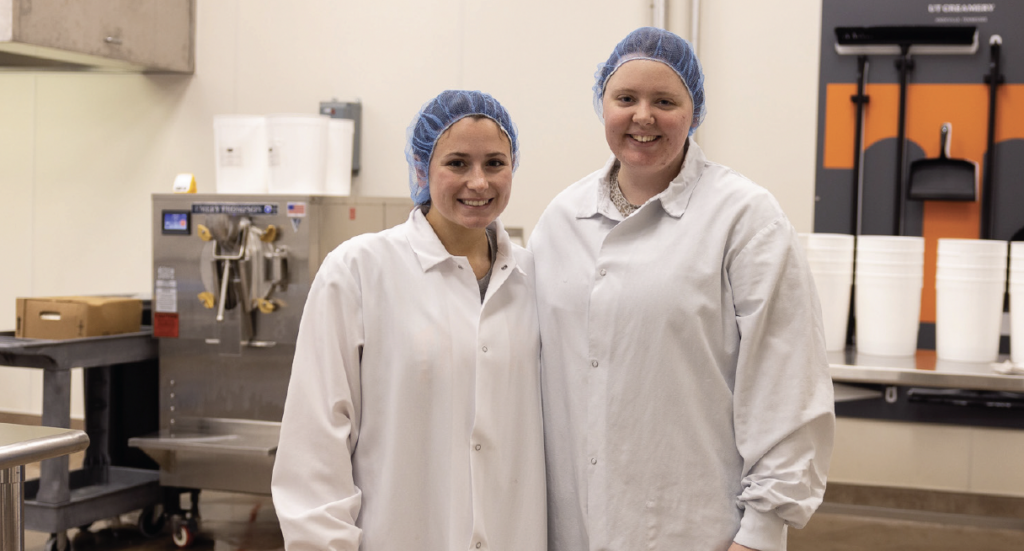
Follow the UT Creamery on Instagram for updates and exciting flavor announcements!
Explore More on
Features
MORE FROM THIS ISSUE


